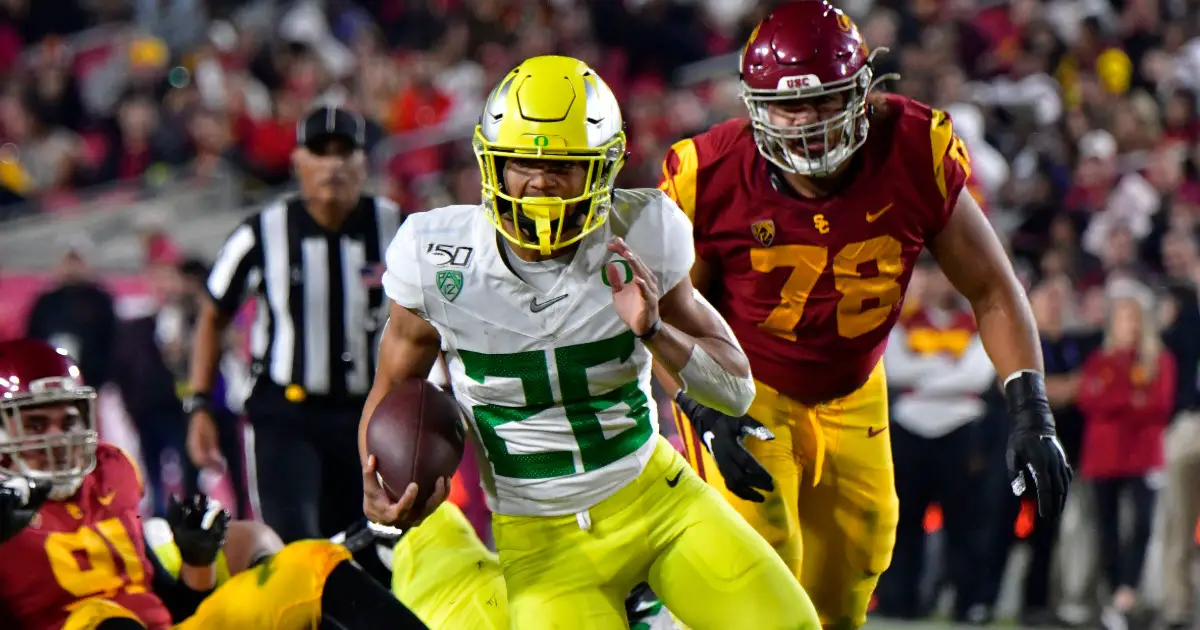It’s no secret that the Pac-12 basically lives in the basement of Power Five football: inferior television contracts, generally the first of the Power Five to go uninvited to a four-team invitational called the Bowl Championship Series, and conference bowl tie-ins that might better be called bowel alignments.
Imagine—giving up the Rose Bowl every three years for the ongoing privilege of not being invited to the big dance. Imagine—going from competing for a chance at the national championship to being relegated to the Alamo Bowl in the course of three hours! No wonder the Utes didn’t show up.
There seems to be a fair amount of belief that the need is for the entire conference to pull itself up—and a hope that getting rid of Larry Scott and gaining television contracts comparable to the B1G and SEC will push the elevator “up” button.
And there are those who think national relevance would return if USC would only step up and be the flagship program it once was.
All of this raises (at least) three questions in my mind.
1) How many of the twelve programs in the conference are even remotely positioned to compete for a national title?
True, Oregon and Utah were in the discussion for the 2019 final four. So was Oklahoma, and that didn’t work out so well. It’s arguable that Oregon would have done better, but it would take a greater sunshine pumper than me to believe the 2019 Ducks were in danger of winning it all.
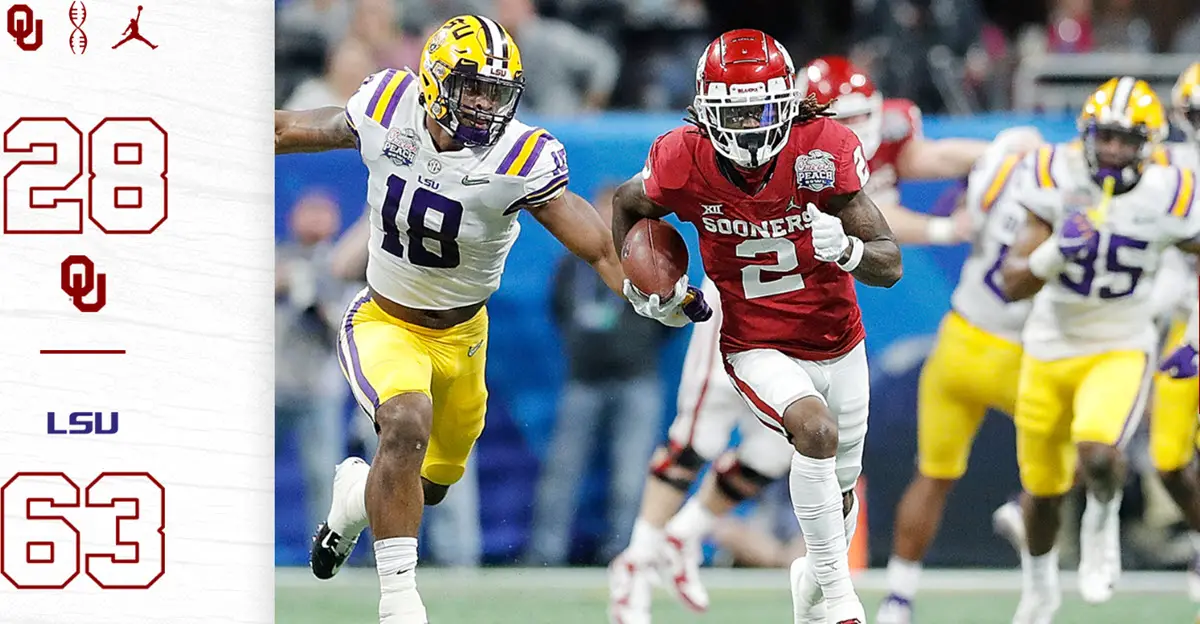
Oklahoma got Hurt in the Playoff…
Which of the Pac-12 programs are on any sort of course to rise to the occasion? Probably not Washington State, Oregon State, Colorado, Utah, and Arizona. Granted, Utah won the Pac-12 South and was favored to win the conference championship…BUT…
The Utes parlayed their great season into Rivals’ No. 31 ranked recruiting class for 2020, up from No. 60 in 2019. There’s such a thing as diamonds in the rough, “coaching up,” etc., but nobody is going to win a national championship with recruiting class rankings that have two digits, and the first digit isn’t a “1,” or even a “2.”
Cal and Arizona State are trending up, but have yet to demonstrate that they can muster the recruiting chops to even get into the teens. And we know how Chip Kelly takes to recruiting at UCLA. Recruiting classes ranked in the twenties and thirties might win the conference in a down year, but they will never win a national championship.
That brings it down to Oregon, Washington, Stanford and USC. Of the four, only Oregon appears to be trending upward.
Washington just lost Ultimate Anti-Duck Coach Chris Petersen (See record against Ducks below.) and promoted defensive coordinator Jimmy Lake to take his place. Lake hired John Donovan as offensive coordinator.
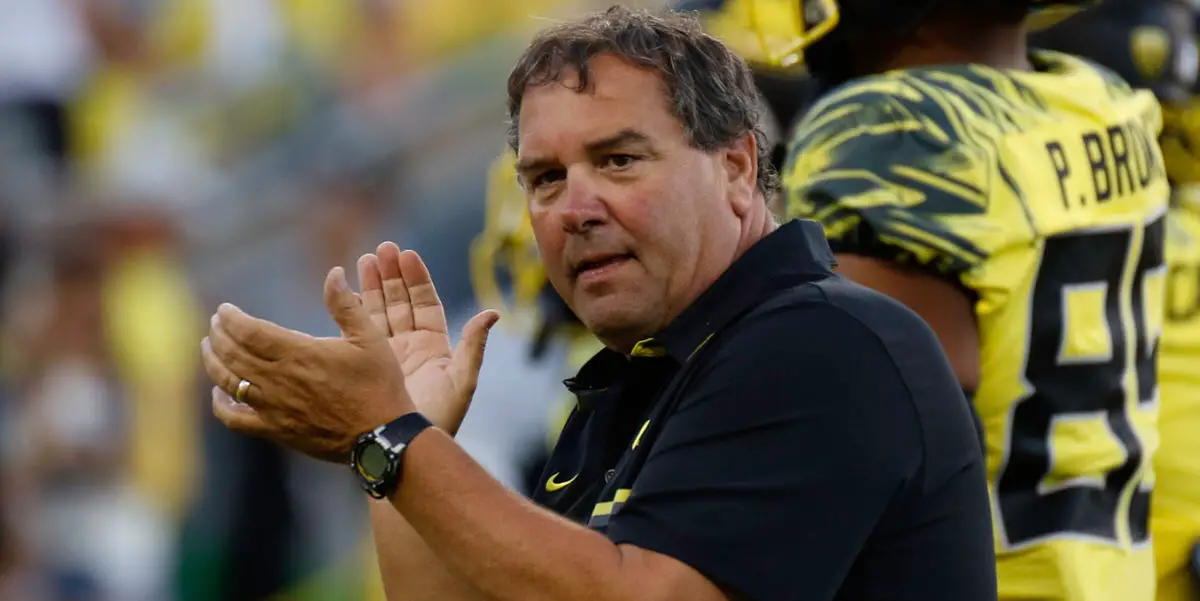
Did Washington get their version of this guy?
In a previous assignment, Donovan tanked the offense at Penn State before new Oregon offensive coordinator Joe Moorhead replaced him and turned things around overnight. Maybe things will work out for the dogs. Or maybe they’ve just hired the Brady Hoke of offensive coordinators?
By any means, in my memory, the dogs haven’t done so well with coaches not named “Don James” (whose program got busted for cheating) or “Chris Petersen” (who went 2-4 against the Ducks).
It seems Stanford had a window of opportunity to work its way into the national title conversation. That window is looking pretty closed now. Perhaps it will re-open, but it’s hard to find anything that makes it look promising in a land where there’s more excitement over midterm results than football.
That leads us to…
2) What is up with USC?
This could be tainted by my years of competition in swimming, but my impression of football teams is that they enjoy being the center of attention. There’s a lot of competition for this honor in Los Angeles, or any NFL city for that matter. Only one university from an NFL city cracked the top ten in the final 2019 polls—Minnesota, at No. 10.
Average population for the cities hosting the top nine college football teams for 2019 was 224,021. And only Columbus, home of tOSU, topped a population of a quarter million. Today’s college football seems to thrive better in “college towns” than in major cities where it’s overshadowed and spirits are distracted by other goings-on.
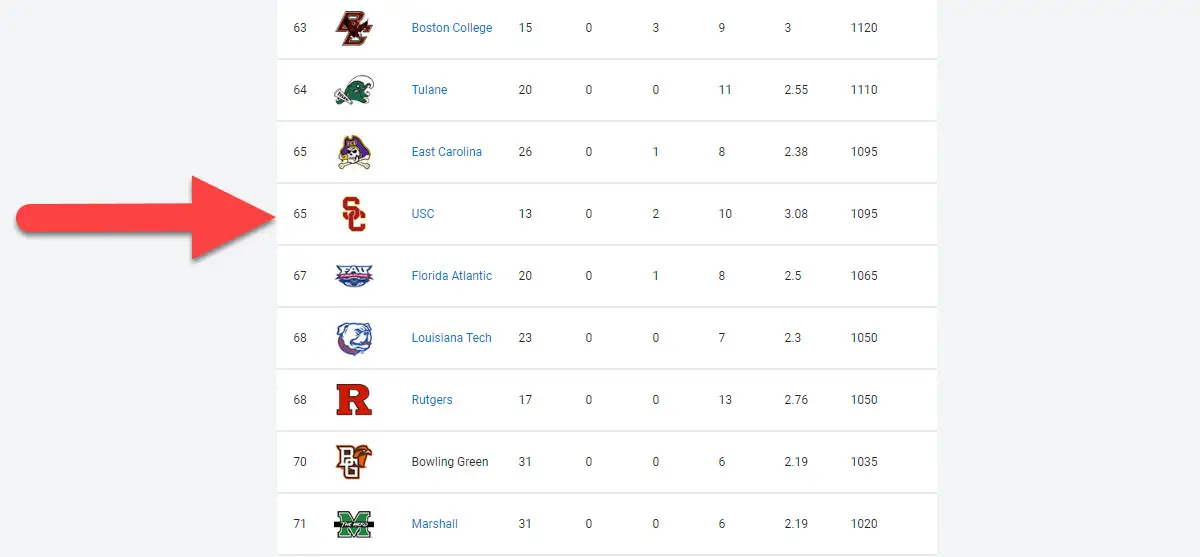
2020 Recruiting Ranking for USC by Rivals.com.
Beyond that, USC has lost its recruiting edge in its own back yard, most notably to Oregon and the eastern powerhouses. The “Fight On” Trojans will have a mighty fight on their hands to regain it, because, unlike the Oakland Las Vegas Raiders, the southern California recruiting raiders aren’t going anywhere.
Could USC overcome all of the above with the right coaching hire? Theoretically possible, but it would be asking a lot from an administration that struggles with the difference between “crew” and “rowing machines at LA Fitness.”
But as Ducks fans, do we even want USC to regain the glory of empires past? Because there’s the question of…”
3) How many elite teams can the Pac-12 sustain?
IF—and this is a big “if”—USC did regain its dominance in recruiting, what impact would this have on Oregon? Hint: Go to the Oregon roster and start marking out the top names that have the word “California” listed where the players are from. It doesn’t take long to figure out that Oregon is a primary beneficiary of USC’s struggles.
Oregon, obviously, is recruiting nationally and is not totally dependent upon California. But if USC were recruiting as strongly as Oregon, it is unimaginable that the Ducks would not suffer from it. A deeper split of the talent pool—contrary to making the conference better—would just dilute the talent at the top, something the maligned conference can ill afford.
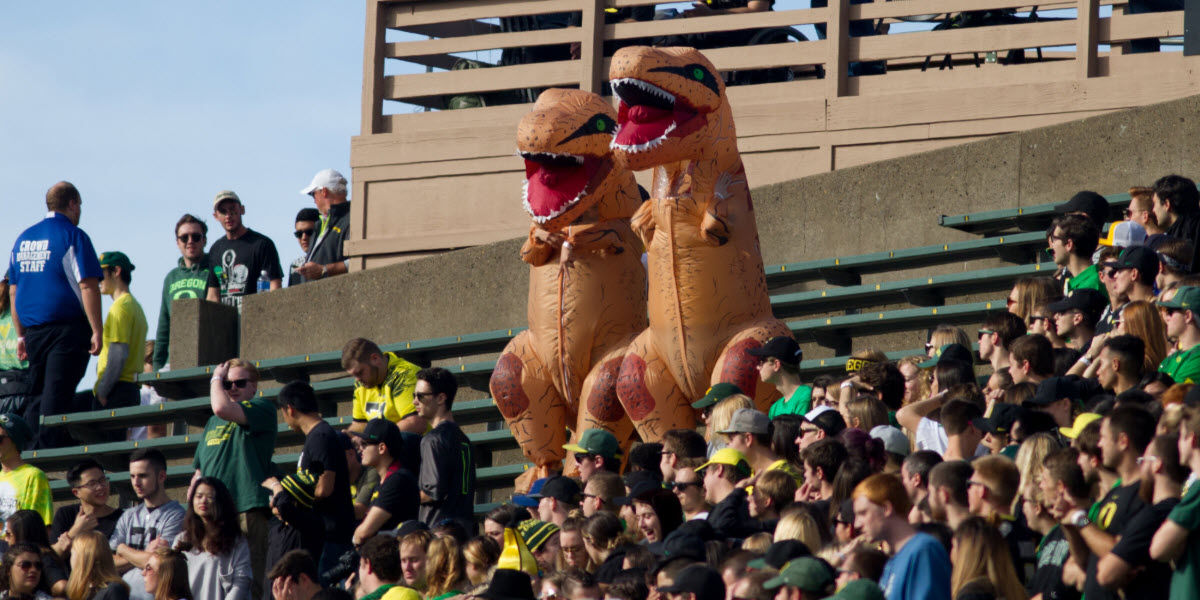
Can two elite teams sit alone from the Pac?
Sure, it’s theoretically possible that more than one Pac-12 team could make it to “elite,” but at this point, the West has not put together enough of its talent in one spot to get the job done, even with supplements from parts of the country where football is considered a religious experience.
It’s undeniable that a television deal on the same level as the SEC or B1G would help fund and promote an overall infusion of talent. But not even firing Larry Scott will make this happen. The population of states with SEC members is 99.1 million. For B1G states, it’s 85.3 million.
For Pac-12 states, it’s 67.7 million. And it is probably pretty hard for television producers to convince advertisers that California’s 39.6 million are more likely to tune in for football than viewers from Ohio or Alabama.
This is not to say that more television dollars aren’t possible. But there’s no way that those revenues alone will achieve parity with the B1G and the SEC. And the conference can’t really develop its brand without its individual programs stepping up and developing their own individual brands.
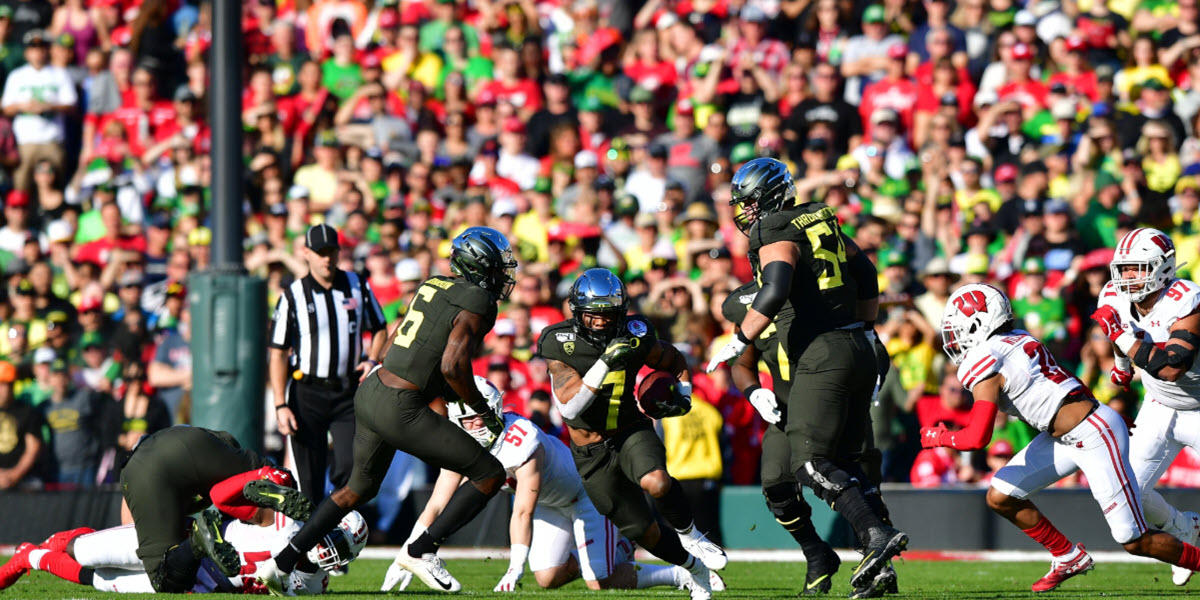
If it can only be one team to excel….why not Oregon?
A final question: Is any of this bad news for Oregon? Not really. One path to the national championship is to win a conference that gets an automatic nod. That means the SEC, the B1G or the ACC. But the fourth spot is up for grabs, and Oregon is positioned to take it, if and when worthy.
The Ducks play Ohio State twice and Georgia once over the next three years, in addition to whatever bowl games they end up in. Unlike most of the Pac-12, they have the opportunity to hone their skills and prove themselves against the best in the country. If they can make it through any of the next three regular seasons with no more than one loss—and without getting blown out by the biggie—they are in.
And who knows? If Oregon—or anyone else in the conference—makes it to “elite,” perhaps others will follow.
Mike Merrell
Sandpoint, Idaho That very cool top photo was contributed by Eugene Johnson
Related Articles:
Oregon Enters Playoffs Better Off Than Last Year
Will The Coaching Carousel Kill Oregon's CFP Chances?
The Playoff Formula Hasn't Changed
Oregon Aims to Bury Dawgs, Punch Playoff Ticket in Rivalry Clash
Huskies Are the New Beavers, Stay In Your Lane Kiffin, and the Civil Apple Cup War
Oregon Football: The X-Factor Vs. Washington
Mike (Editor-in-Chief) is a 1970 graduate of the University of Oregon where he attended the Honors College and received all-conference honors as a swimmer. After college, Mike ran for the Oregon Track Club and narrowly missed qualifying for the US Olympic Trials in the marathon. He continues his involvement in sports with near-daily swimming or running workouts, occasional masters swim competition (where he has received two Top-10 World rankings), providing volunteer coaching to local triathletes and helping out with FishDuck.com.
Mike lives on 28 acres in the forest near Sandpoint, Idaho, where he has served as a certified public accountant for most of his working career. His current night job is writing novels about Abby Westminster, the only known illegitimate daughter of Britain’s finest secret agent who has to bring down arch-villains plotting dastardly deeds. And, yes, Abby is also a DUCK!

